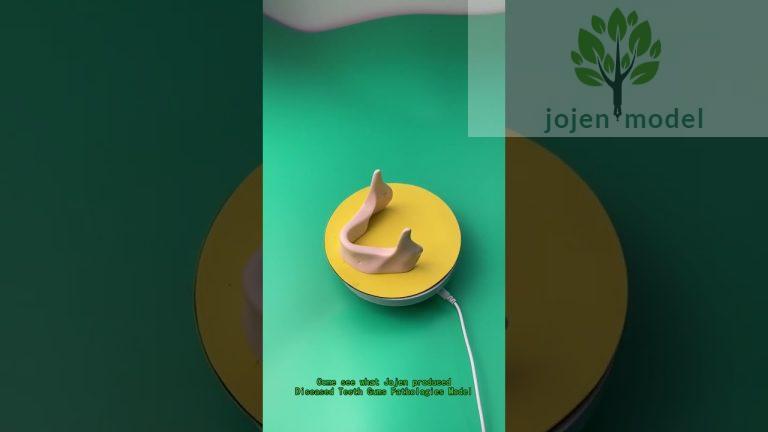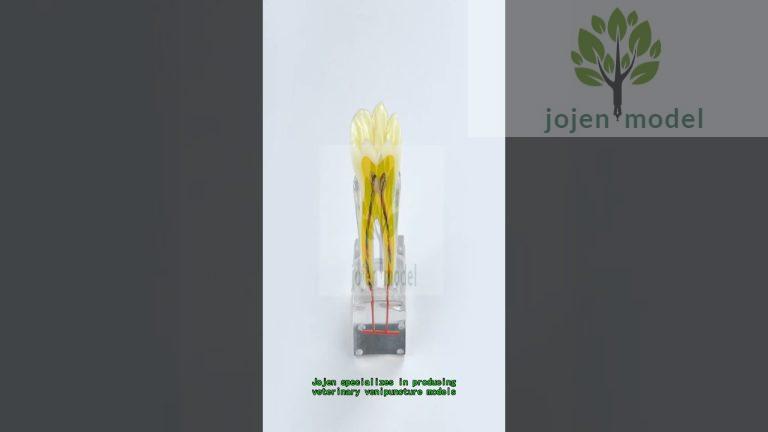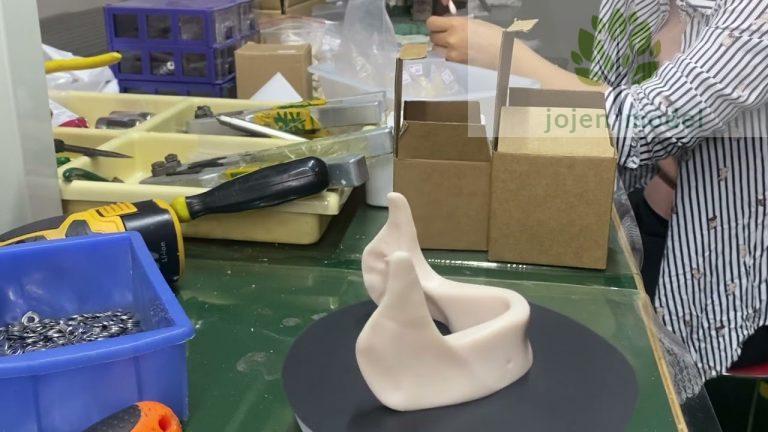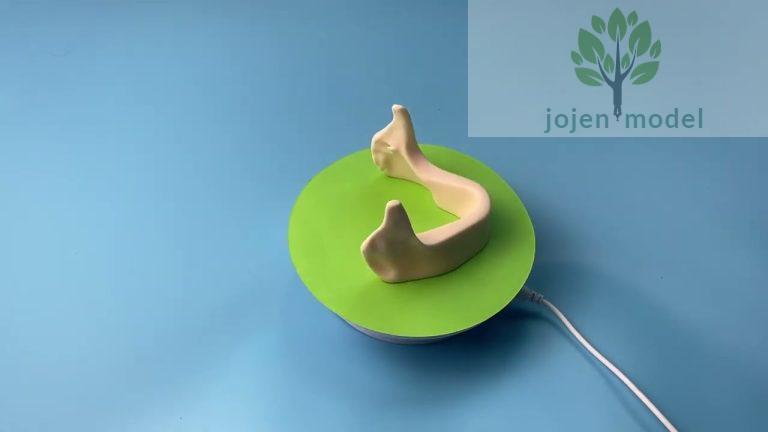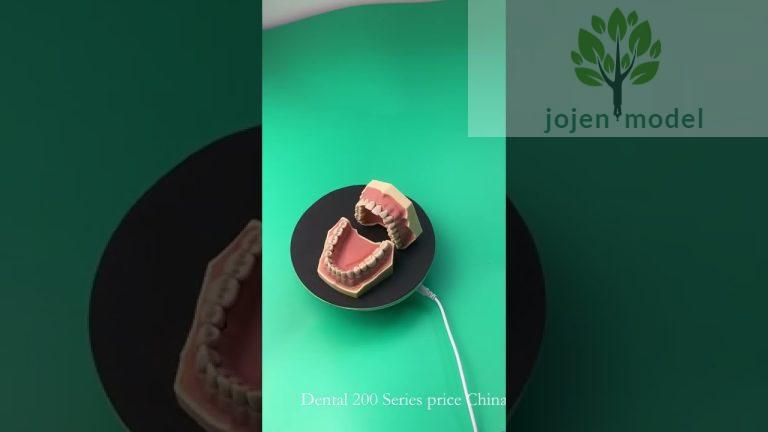Hey there! As someone who’s spent a good chunk of their career teaching in the field of dental education, I’ve come to appreciate one tool above all others – dental typodonts. These nifty models are more than just replicas of human teeth; they’re the bridge between theory and hands-on practice. In this article, I’ll take you through why these models are a game-changer in dental training and share some personal experiences from my teaching days that highlight their importance.

Stay tuned, as we dive into the world of dental typodonts – from their diverse functions in various dental specialties to the latest innovations that are transforming dental education.
Overview and Functions of Dental Typodonts
Moving on to the heart of our discussion: dental typodonts. These marvels aren’t just models of teeth lined up in a row; they are sophisticated tools designed for specific educational purposes. Let me break it down for you.
The Essence of Typodonts in Dental Training
A dental typodont, for those new to the term, is essentially a life-like model of the mouth and teeth. But it’s more than just a static model – it’s an interactive teaching tool. In my early teaching days, I realized that while textbooks are great for theory, typodonts are where the real learning happens. They bring the textbook diagrams to life.

Catering to Various Dental Specialties
Typodonts come in different shapes and forms, each tailored for a specific area of dentistry. For orthodontics, they mimic various orthodontic conditions, allowing students to practice brace fittings. In tooth preparation, they help students understand the nuances of drilling and filling. For periodontal treatment, these models show different stages of gum disease, and for implants, they provide a realistic experience of implant placement.

A Personal Anecdote
I remember a student who was particularly nervous about performing a root canal. We had a typodont model specifically for endodontic training. After several practice sessions with the model, her confidence skyrocketed. It was a testament to how these models can demystify complex procedures.

Innovative Techniques in Typodont Usage
Embracing New Teaching Methods
The world of dental education is always evolving, and typodonts are at the forefront of this change. Gone are the days of passive learning; now, it’s all about interaction and engagement. I’ve experimented with various teaching methods using typodonts, and the results have been nothing short of remarkable. For instance, pairing students for peer reviews on typodont work fosters a collaborative learning environment that’s both competitive and educational.
Merging Technology with Traditional Models
The integration of technology in typodont training is a game-changer. Imagine combining traditional models with digital overlays or augmented reality – it opens up a whole new world of possibilities. I’ve seen students use AR apps with typodonts to simulate different dental conditions, enhancing their understanding of complex procedures. This tech-integration not only keeps students engaged but also prepares them for the digital future of dentistry.
Anecdote: The Tech-Savvy Class
There was this one class where we used a virtual reality setup with typodonts. The students were able to perform virtual dental procedures. The excitement and enthusiasm in that room were palpable, and the learning experience was unparalleled.
Case Studies and Real-world Applications
The Impact of Typodonts in Practice
In the world of dental education, theory is essential, but practice is king. Typodonts bridge this gap effectively. I’ve seen numerous instances where typodonts have significantly improved students’ practical skills. For example, in a study we conducted, students who trained with typodonts showed a 30% improvement in their clinical competencies compared to those who didn’t.
Feedback from the Future Dentists
The response from students has always been overwhelmingly positive. Many have expressed how typodonts provided them a safe space to make mistakes and learn from them before treating real patients. This kind of feedback is invaluable in fine-tuning our teaching methods.
Customization and Adaptability of Typodonts
Tailoring to Specific Needs
One of the most significant aspects of typodonts is their ability to be customized. Different dental specialties require different training models. For example, a typodont used for orthodontic training differs significantly from one used for implantology. Over the years, I’ve worked with manufacturers to develop models that cater specifically to the curriculum’s needs, enhancing the learning experience significantly.。

Adapting to Various Teaching Environments
Typodonts aren’t just for traditional classroom settings. They’re incredibly adaptable to various learning environments, including online and hybrid models. During the shift to online education, we used typodonts for remote demonstrations, which was a novel approach that received great feedback from students.
Benefits of Using Typodonts in Dental Education
Enhancing Hands-On Experience
The real power of typodonts lies in their ability to provide hands-on experience. Traditional methods like lectures and textbooks are foundational, but typodonts add the crucial practical element. This hands-on approach not only helps in refining technical skills but also boosts students’ confidence. As an educator, I’ve seen how practicing on typodonts can transform a hesitant student into a confident future dentist.
Overcoming Real-World Challenges
Typodonts prepare students for real-world challenges. By practicing on models that closely mimic actual dental scenarios, students are better equipped to handle complex cases once they step into the clinic. This level of preparation is not available through traditional methods.
Guidance for Institutions and Model Dealers
Selecting the Right Typodonts
For institutions and model dealers, the selection of the right typodonts is crucial. It’s not just about the model’s quality, but also about its relevance to the curriculum and specific training needs. Over the years, I’ve advised many institutions to consider factors like versatility, durability, and technological compatibility when choosing typodonts. It’s about investing in tools that will stand the test of time and evolve with educational trends.
Collaborative Efforts for Better Outcomes
Collaboration between educational institutions and model dealers is vital. By working together, they can ensure that the models meet both educational standards and practical requirements. I’ve been part of discussions where dealers provided customizable options based on our feedback, which significantly enhanced the teaching and learning experience.
Future Trends in Dental Typodont Use
Embracing Technological Advancements
The future of dental typodonts is intertwined with technological advancements. We’re already seeing trends like augmented reality and 3D printing making their way into dental education. These technologies will further enhance the realism and effectiveness of typodont training, making them even more indispensable tools for dental students.
Staying Ahead in Dental Education
As educators, it’s crucial to stay ahead of these trends. By incorporating the latest innovations in typodonts into our curricula, we can ensure that our students are not just competent, but also pioneers in the evolving field of dentistry.
Conclusion
In conclusion, dental typodonts are fundamental in modern dental education. They do more than just aid teaching; they are transformative in improving students’ practical abilities. By offering hands-on experience in a controlled environment, typodonts significantly reduce the risk of accidents caused by interns’ lack of practical experience. This aspect of training is crucial, not only for the confidence and competence of future dental professionals but also for patient safety. Embracing these innovative tools is essential for shaping skilled, experienced dental practitioners ready to face the challenges of the dental world.


